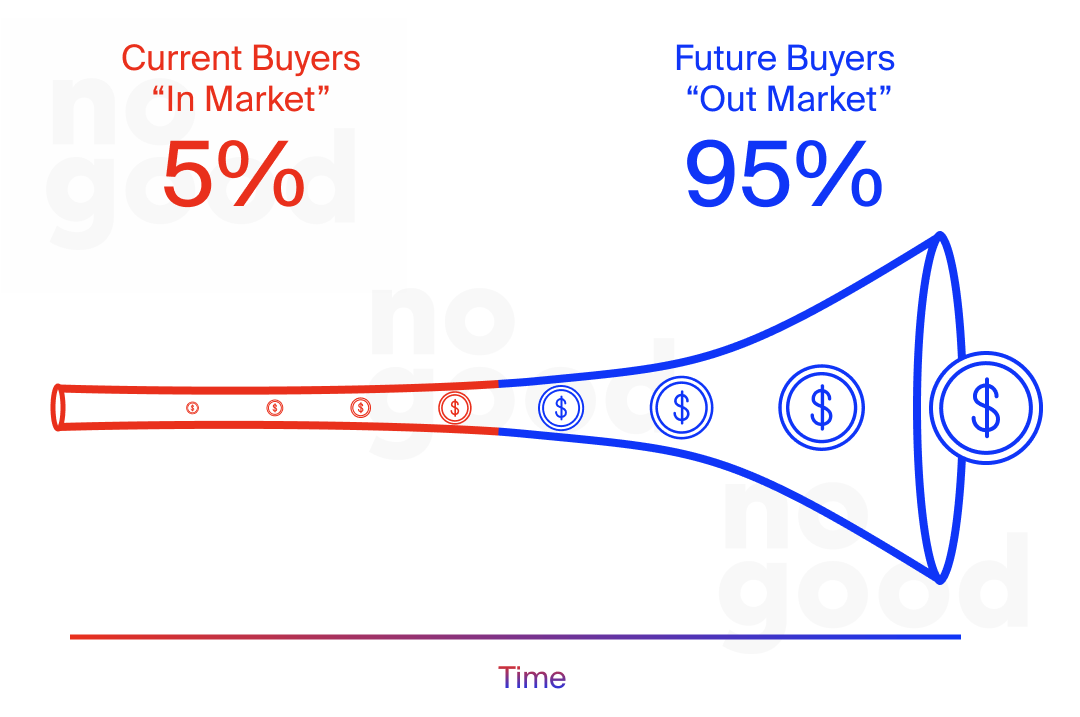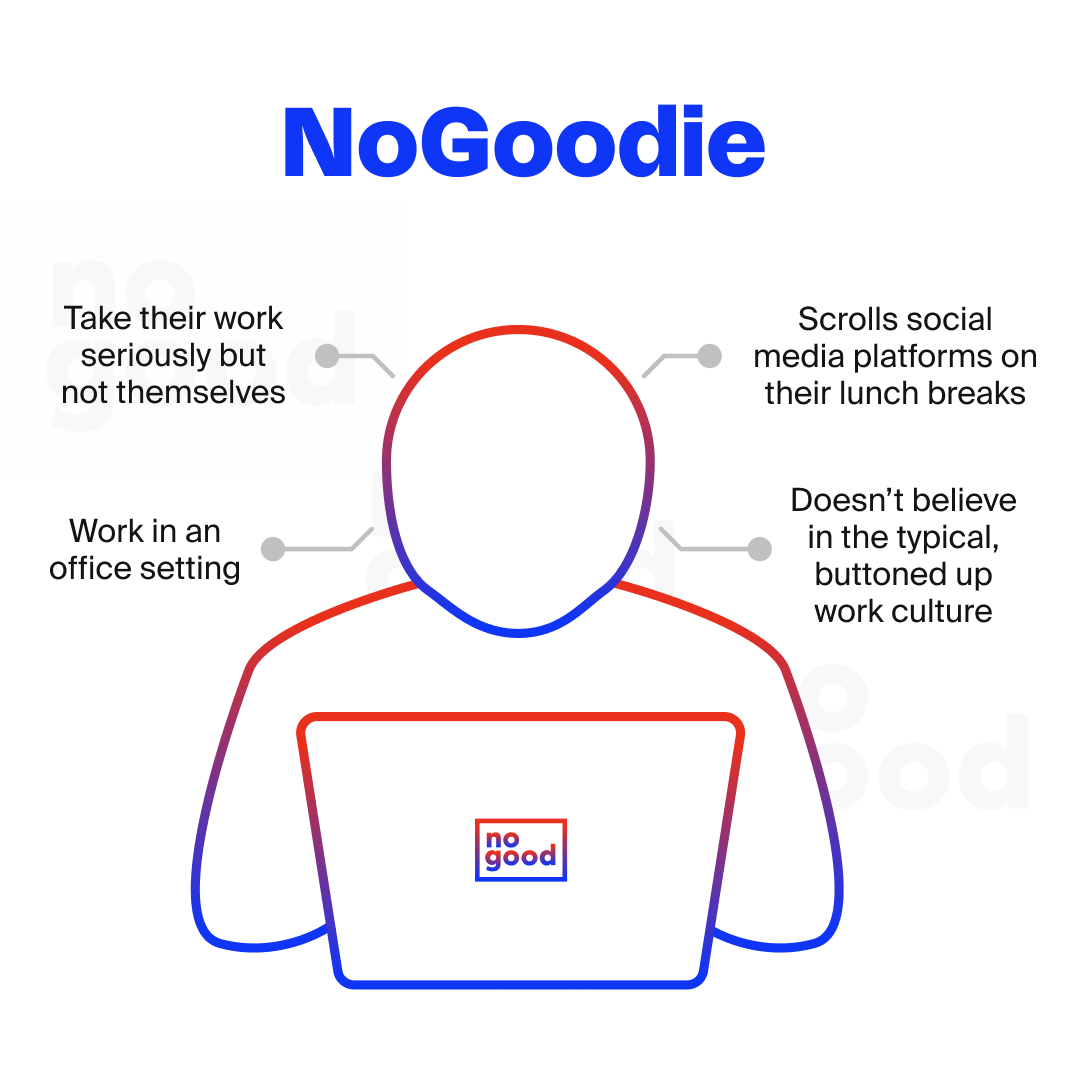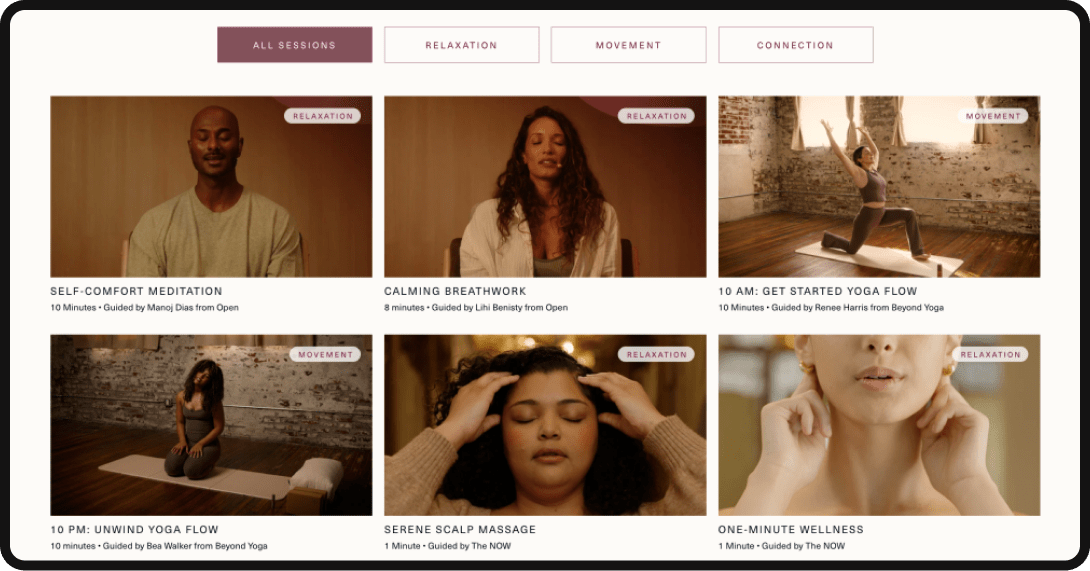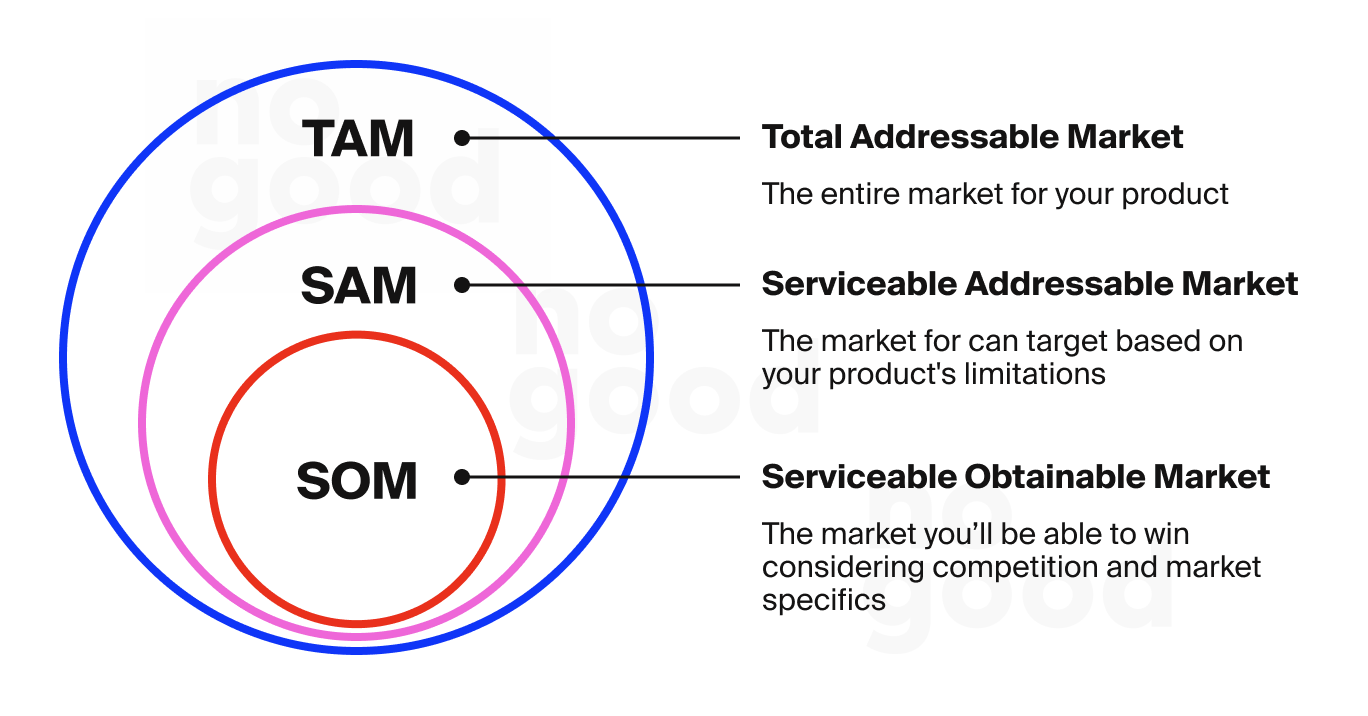Brand communities are the talk of the brand-building town now. Brands are quickly realizing that building, nurturing, and sustaining a digital community is an essential element of their growth strategy. But here’s the catch: very few understand the why.
Why is the investment of time and resources to build a brand community worth it? Because, quite frankly, it’s not a small investment — success ultimately lies in playing the long game. Just like building authority as a brand takes time, so does winning audience trust and converting them to loyalists: it takes patience on top of a sound strategy.
Missing the point on the purpose and value of a digital community is a common mistake; correcting it starts with thinking past statements like “we want to be on TikTok” or “we want to be like Duolingo” and understanding what each brand’s community (and thus content formula) looks like.
The front-facing result of a brand community is easy to see and identify. Millions of followers are a nice number to boast about; however, that says nothing about the community impact on your business if other factors about the interests of these community members, their engagement levels, and their advocacy, amongst others, aren’t considered.
A strong brand community offers the potential for:
- Increased brand loyalty
- Organic brand ambassadors
- Medium for consumer feedback and new ideas
- Connection with current customers
Let’s define what that means and how you can get there.
What Is a Brand Community?
A brand community is where the people who love, support, and buy from your brand can gather to interact with you. This is often a digital community that is made up of social media accounts, open forums, and/or discussion groups (amongst other formats), but this extends to community events as well (e.g., pop-ups, in-person events, brand activations, etc.).
These people are not made up of only brand loyalists and returning customers; they include those who haven’t purchased from you yet but still find themselves interacting with your content and talking about your brand. This is because building a brand community goes beyond filling your top-of-funnel and into building brand equity.
The 95:5 Rule provides a realistic framework for how marketers should be thinking about the community they are trying to target. The focus is not solely on the 5% of people who are ready to purchase but on the 95% of those who are outside the current market. This is because the people will move themselves from the 95% to the 5% when they are ready to purchase.
Our job is not to make them ready to purchase (they could have just bought whatever you were selling, or it may not even apply to them yet). Instead, our job is to make sure everyone in that 95% knows and remembers who we are, so when they do move to the 5%, we are the first ones they think of. Developing goals for brand communities means focusing on reach (which translates to acquisition) and engagement (which translates to retention).

This means your efforts are going to be broader, bolder, and, thankfully, a lot more engaging. Your primary goal is to be remembered, focusing on getting attention rather than selling immediately. Messaging and communication around “buy now” or “benefits of x product” are only going to apply to that 5% of people who are ready to purchase, which means you are greatly narrowing your opportunity.
By reaching a broader audience of current and future customers, you are creating a long-term relationship, making you top of mind when they are ready to make a purchase. By investing in community-building, you are investing in the 95%, a.k.a. your future purchasers.
A brand community is built around shared interests, and that interest is not always about your brand only. If you imagine your brand as a person, what would that person like to do? Where would they like to go? What types of conversations would they engage in? What would their tone of voice be? What would they care about?
If you are building your community from scratch, then you will need to use your buyer personas as an indicator of the community interests, but your community persona is going to look like a much broader version of this. For example, your buyer persona may be a 30-year-old named Rachel who works in corporate finance and goes to workout classes on the weekends.
However, your community persona may be young females who are active and most likely work in a corporate setting. Chances are, the people in your community are going to be similar to the people who are in your organization, and the person running this community must fit the culture you are curating.

For example, Rare Beauty’s community persona is not only makeup lovers but also those who prioritize wellness, mental health, and accessibility. They gear their social efforts towards this group, and they went a step further in their community building with their Comfort Club initiative, providing a way for them to own a space for their community to gather – see what we think of Rare Beauty’s brand-building initiatives!

How to Build a Brand Community
The Role of Your Team — and Lead Creators to Rally Them
Believe it or not, content creation efforts across social channels take more than just a designated team of creators, designers, writers, and marketers. In most cases, social environments aren’t always the most brand-friendly to begin with; viewers tend to connect and trust peers (read: creators) more than abstract corporations.
Rather than treating this as a disadvantage, though, it’s important to consider it as an opportunity: it means that to win at social, humanizing the brand is crucial.
This is where the mascot-driven brands have gotten it right: associating the brand with a personable character that feels relatable is one way to go about it. However, there is a more authentic way brands can build authentic connections with their viewership — and that’s through their own people.
Whether it’s through serialized skit series with real team members or mini mic series that give the humans behind the brand a voice, video formats that bring in real people and pull the curtain for the audience to peek behind the scenes, create that relatability that brands often struggle to manufacture.
Who will manage the effort of building the brand community? Having a primary leader to steer this effort in creation, strategy, and community management is extremely important. This person should essentially be your community personified, someone who understands the interests, pain points, and communication styles of those whom you are trying to connect with.
This is ideally done with an in-house creator who can own this process. There can and should be other faces on your socials; however, you need at least one person (ideally, a team) who is dedicated to directing those efforts, rallying the other team members, and keeping the pulse on what the community wants.
Great examples of community ownership are Duke from Shinesty and this creator from tldv.io.
Steps to Building Your Brand Community
1. Identify Community Persona
When establishing your community persona, you are looking at your Total Addressable Market. This is the largest circle of people you can talk to, the 95% of people who could be a customer in the future but may not even know who you are yet.

To identify their interests, start by looking externally and internally.
External research includes competitor analysis, trend analysis, who has interacted with the content of said competitors, and what the broad interests related to your brand are.
Internal research includes identifying social listening, who has interacted with content you have made so far, and (this might come as a surprise) what your internal team interests are — often, your internal team can be a great reflection on those who would be interested in you.
For a brand like Oura, they have established interests in data-driven health, they know that their audience probably pays attention to pop culture and major moments (offering trending topics they can plug into), and their audience is specific in their interest of restful and purposeful wellness over hustle culture.
2. Establish Brand Positioning
As mentioned earlier, when brands create content on social media, they are at an automatic disadvantage to individual creators because viewers are much more likely to buy into and engage with an individual creator than a brand. This is why it’s important to establish your brand voice online and the value that you will bring to your audience.
It should be very clear what type of content is on brand and what is not. Your brand may approach content in a funny way, a sympathetic way, an authoritative way, etc.
Think about your ideal audience scrolling through their favorite social media platform, and they scroll onto your content. It should be very clear without even seeing the handle that you created that content because the tone, style, and even the creator are recognizable.
This goes back to the importance of having a lead creator who is steering the efforts and has their finger on the pulse of a community, similar to how an individual creator has the pulse on theirs, so they can manage that brand voice and digital presence.
Establishing your brand voice is done by finding ways to merge brand values, community interests, and entertainment value into each piece of content. In order to organize this process and establish the yeses and the noes of your content ideas, you want to establish content buckets.
3. Create Content Buckets
Content buckets, also known as content pillars, are the categories of content that you will share with your audience that have been created based on your community persona and your brand positioning and values. These can be separated, for example, by the value you are bringing or the different shared interests you have identified.
NoGood has different content buckets for each channel (IG, YouTube, and TikTok), and a few of ours are Growth Marketing, Brand Analyses, NoGood Culture, and AI and Tech. We focus primarily on content that educates on marketing or entertains by sharing our internal culture.
Through our content experimentation, the NoGood social team established that our team members were our greatest asset. We developed content series, including an office interview series and an office reality show, with the latter gaining over 10M+ views and driving over 30,000 followers. Below is a breakdown of how we did it and the lessons we learned from starting this culture-driven content show.
The NoGood Reality Show: A Case Study
How We Built It
The NoGood Reality Show, which has garnered over 10M+ views and gained over 30,000+ followers, was brought to life from a single video. We had the idea to take the common annoyances of office life — experiences that a future community of experts across marketing, design, data science, sales, content creation, and more deal with — and film them in the form of a reality TV show.
But what this ultimately evolved into was the understanding that:
- This format gave us a perfect medium to introduce characters and build off of storylines,
- The audience enjoyed the common characters and would react to the content with previous “episodes” in mind, creating regular viewers,
- This was the perfect blend of entertainment and showing the internal NoGood culture of creativity (and creator talent) through comedic sketches.
As we created more videos, the experimentation with different content styles, storylines and delivery methods allowed for further refinement of how this format aligned with NoGood’s brand the most. While it opened up more experimentation, it also allowed us to continuously retrace the lines that defined who NoGood was and was not as a brand.
While we had many pieces going out to test those boundaries that we can now confidently categorize as good pieces of content, not all of them perfectly aligned with NoGood or our community. It takes this type of experimentation to figure out who you are by figuring out who you are not.
Content Categories
In our experimentation, we gained the understanding that two types of content could fit under this “skit” umbrella.
“Behind the Scenes” content where the audience feels that they are witnessing a behind-the-scenes look at office life at NoGood.
Example: Work Enemies Get Sent to HR.
And timely content where we can act fast in order to put our hat in the ring on trending topics using the skit delivery format.
Example: Coworker Buys a Stanley Cup during the Stanley Cup craze, and If the Office Were Mean Girls during the Mean Girls movie release hype.
Lessons Learned During the Building Phase
- Not all content is for every channel
As much as we wanted to share the reality show on every channel, TikTok and YouTube did not have the same performance metrics as Instagram. This caused questions about what content should go where and led us to develop our channel-by-channel segmentation strategy.
- Not every idea is for NoGood
As stated before, we went through a lot of experimentation to see what kind of skits worked, what format of editing was the best, what skit scenarios did well, and what topics were relevant to include. During this process, we even identified pieces of content that performed well but we later realized were not aligned with our brand. This is part of the process, and it is a good thing!
- The talent matters
If you are looking to build a content format like this, it is imperative to cast your talent well. The role of creators in your content is very important, and having a single creator who steers the ship is going to make this much, much easier.
You should showcase many people on your team, but not everyone is a creator. You need someone who can produce and direct the process, help the team understand their roles in each piece, and manage the brand image of that content.
- Let the community lead what you create
We very quickly had viewers reacting to the content and even commenting “easter eggs” on other videos. For example, this video introduced a narrative of Sarah (creator) having a pet raccoon. This raccoon is now referenced in the comments often, and we will write scripts that give a nod to the raccoon storyline for the viewers who are in on the joke.
Additionally, the comment section will drive ideas, and we can take the questions the viewers are asking and the narratives they are building in the comments to build more characters and storylines. For example, there was a growing theme of the audience seeing a love interest between the two main characters, Sarah and Chris. So, playing off of this joke we created a skit for Valentine’s Day to play off of this work enemies narrative.
This reality show has opened up opportunities to incorporate and work with brands, bring people outside of the social team to the forefront, and comment on culturally relevant topics in a fun and entertaining way.
Great Community-Building through Culture-Driven Content
The brands below started their digital brand-building journey at the height of TikTok growth, which is no longer the case.
Are you seeking alternative strategies to build communities through vertical video on other platforms?
The Ordinary
The Ordinary regularly creates content with these strategies:
1. Featuring their internal team, especially those behind creating the products, to humanize the brand and bring people inside the Ordinary World.
@theordinary the icon/scientist that created our #Niacinamide serum.. could work on his lipsync skills tho 🙏 #theordinary ♬ YUH IM A MOTHHAA – Trendsetter ⭐️
2. Understanding the feedback on the products they are getting from the community and how they are using them, not just how The Ordinary recommends using them (they also use this as a feedback loop to the product and marketing team to change formulas and messaging based on what they hear from the community!)
@theordinary we’re NOT over exfoliating in 2024 🙅♀️ #theordinary #fyp #skintok #glycolicacid #ahabhapeelingsolution ♬ original sound – FLOPETTE
3. Engaging in conversations with those who comment
@theordinary bestie, i have some news for you… #theordinary #cleansers #fyp #skintok ♬ original sound – Zirkia Sampson
Notion
Notion was one of the originals creating “unhinged” content on TikTok. Here are the strategies they regularly use:
1. Showcasing their team (including what they do). You can’t identify a single creator for them because it’s very clear that many, if not all, of their employees are in on the fun.
@notionhq Walk, walk, fashion, baby. Starting our Monday right with a Notino #OOTD ✨ #notiontok #notion #notionapp ♬ murder on the dance floor sped up – ᴄᴏᴍᴘʟᴇx 🎧
2. Understanding and capitalizing on the Notion Culture, since it’s very clear the type of person who uses Notion is also the same type of person who would work there.
@notionhq Just ✨Notion✨ things #notion #notionapp #lifeatnotion #notiontok #notionforlife ♬ original sound – Notion
3. Creating a digital community that gets excited about their updates and using their content as a constant communication channel to them.
@notionhq “When is the Notion affiliate program going global?” Today babes 💥💸 ##notion##notionapp##notiontok##notionai##notiontemplate##affiliate##affiliatemarketing##makemoney ♬ stop using this audio to sexualize people – venus
Honorable Mention: OpenTable
Though OpenTable is still in the process of building a more two-way communication channel with their digital community on TikTok, their recent videos interviewing their team members about restaurants they are trying is a good example of using the brand culture and the team to create content that then resonates with your ideal audience.
@opentable What restaurant do YOU want to try this year?! #opentable #opentableapp #opentablereservations ♬ It's Time – Foliage
Building a vibrant brand community transcends traditional marketing strategies and often goes against a typical data marketer’s instincts. A strong brand community is a testament to a brand’s commitment to fostering genuine connections and cultivating long-term relationships with its audience.
By embracing shared interests, brand authenticity, and especially entertainment value in content creation, businesses can establish thriving communities that serve as pillars of brand advocacy. As we can see from the examples provided, using your team culture is a key strategy in building your digital one.
Now, has anyone seen Sarah’s pet raccoon?
Build and Scale your Community Across the Largest Social Platforms
Partner with the award-winning architects behind social media’s most viral moments and creative trends.






